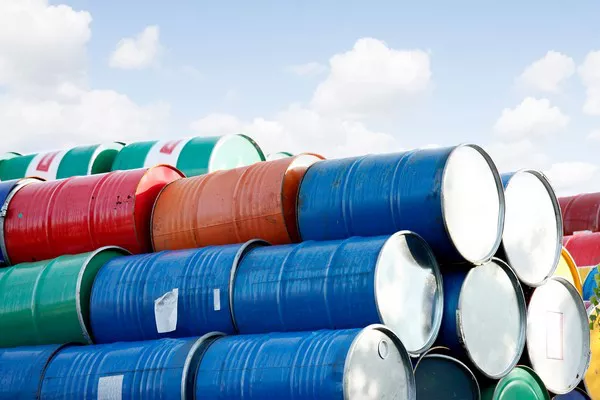Introduction
In the realm of commodities trading, particularly in the volatile world of oil, the terms “contango” and “backwardation” carry significant weight. These terms describe the shape of the futures curve and indicate crucial market sentiments and dynamics. In this article, we delve into the intricacies of contango in oil futures markets, exploring its definition, market dynamics, economic implications, historical examples, trading strategies, impact on ETFs and index funds, risk management techniques, the role of the cost of carry, graphical representations, and future outlook.
Definition of Contango
Contango is a term used to describe the situation where the futures price of a commodity is higher than the spot price, resulting in an upward-sloping futures curve. This phenomenon typically occurs when market participants expect future prices to be higher than current prices. In contrast, backwardation refers to a downward-sloping futures curve, where the spot price is higher than futures prices.
Market Dynamics
Several factors contribute to the emergence of contango in oil futures markets:
Supply and Demand Dynamics: Contango often arises when there is an oversupply of oil relative to demand. This surplus prompts traders to buy and store oil for future delivery, driving up the futures price.
Storage Costs: As oil is a physical commodity, storing it incurs costs such as leasing storage tanks, insurance, and financing expenses. When storage costs are relatively low, it becomes economically viable for traders to hold oil in storage, contributing to contango.
Expectations of Future Price Movements: Market participants’ expectations of future supply and demand dynamics, geopolitical events, economic conditions, and regulatory changes influence the shape of the futures curve. If investors anticipate a future increase in oil prices, they are more likely to buy futures contracts, pushing prices higher and leading to contango.
Economic Implications
Contango has various economic implications for market participants:
Producers: While contango may provide producers with an opportunity to lock in future prices through hedging, it can also indicate a weakened market sentiment, potentially leading to lower revenues for producers.
Consumers: Consumers may benefit from contango as it implies lower spot prices in the short term. However, sustained contango could signal future price increases, affecting consumer purchasing decisions and long-term budget planning.
Traders and Investors: Traders and investors may capitalize on contango by employing strategies such as spread trading, where they simultaneously buy and sell futures contracts with different expiration dates to profit from price differentials. However, contango poses risks, such as roll yield losses, which traders must manage effectively.
Storage Operators: Companies involved in oil storage benefit from contango as they can charge higher fees for storing oil during periods of oversupply.
Historical Examples
Historical examples of contango in the oil markets illustrate its impact:
2008 Financial Crisis: During the 2008 financial crisis, oil prices entered contango as global demand plummeted amidst economic uncertainty. Traders rushed to store oil, driving up futures prices.
2020 COVID-19 Pandemic: The onset of the COVID-19 pandemic led to a dramatic decline in oil demand, causing prices to collapse and futures markets to enter contango. Storage capacity became scarce as traders struggled to find space for excess oil.
Strategies for Traders
Traders can employ several strategies to navigate contango:
Spread Trading: Engage in spread trading by simultaneously buying near-month futures contracts and selling contracts with later expiration dates. This strategy aims to capture the price differential between contracts.
ETFs: Utilize exchange-traded funds (ETFs) that specialize in commodities to gain exposure to oil without directly trading futures contracts. However, investors should be aware of the impact of contango on ETF returns.
Impact on ETFs and Index Funds
Contango affects commodity ETFs and index funds that hold futures contracts:
Roll Yield: In contango markets, ETFs incur roll yield losses as they continuously roll expiring futures contracts into more expensive contracts. This can erode long-term returns for ETF investors.
Tracking Error: Contango can widen the tracking error of ETFs and index funds, leading to discrepancies between the fund’s performance and the underlying commodity’s price movements.
Risk Management
Effective risk management is crucial when dealing with contango:
Diversification: Diversify investment portfolios to mitigate the impact of contango on individual positions.
Active Monitoring: Continuously monitor market conditions and adjust trading strategies accordingly to minimize losses.
Contango and the Cost of Carry
Contango is closely linked to the concept of the cost of carry, which encompasses storage costs, financing expenses, and other carrying costs associated with holding a physical commodity. In contango markets, the cost of carry is positive, reflecting the higher futures prices compared to spot prices.
Future Outlook
A market in contango may indicate expectations of future price increases but can also reflect underlying supply-demand imbalances and market uncertainties. Traders and investors should carefully assess the drivers of contango and consider their implications for future oil prices.
Conclusion
Contango in oil futures markets is a complex phenomenon driven by supply and demand dynamics, storage costs, and market expectations. While it presents opportunities for traders and investors, it also poses risks and challenges that require careful navigation and risk management. Understanding the factors influencing contango and its implications is essential for effectively participating in commodity markets and making informed investment decisions.


